According to American resources, it became known that at the end of June 2022, the US Army issued General Dynamics Land Systems (a division of General Dynamics Corporation) a contract worth $ 55.85 million for the supply of an undisclosed number of Pandur EVO (6x6) wheeled armored personnel carriers as a new generation of armored vehicles AGMS (Armored Ground Mobility System) for Special Operations Command USA. Deliveries under the contract should be made by mid-2025.
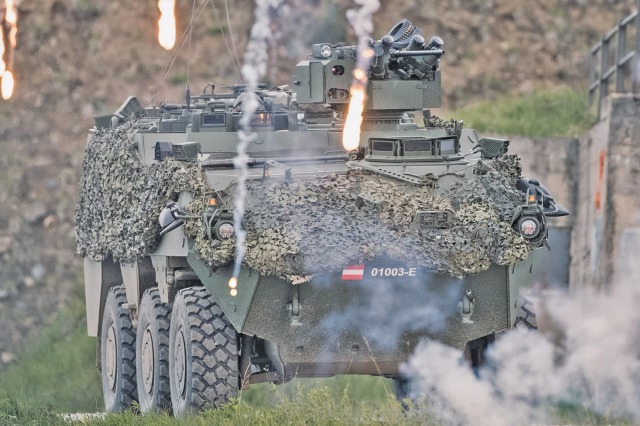
GDELS-Steyr Pandur EVO armored personnel carrier of the Austrian Army (c) Austrian Armed Forces
According to unofficial reports, the Pandur EVO armored personnel carrier was chosen as a replacement for the currently used by the United States Special Operations Command (USSOCOM) as armored vehicles under the designation AGMS of the Pandur I (6x6) armored personnel carriers of the first generation. It is reported that the tests of the Pandur EVO for USSOCOM are planned to be carried out in the United States in fiscal years 2023-2024, after which the delivery of the contracted batch will be carried out.
The replacement program in USSOCOM of the current AGMS / Pandur I machines was launched in early 2019, first called New Generation AGMS, and then JAGMS (Joint Armored Ground Mobility System). The requirements and Request for Information (RFI) for the new generation JAGMS machine were released by USSOCOM in February 2020 - however, apparently, there was no real competition and the orientation from the very beginning was on the Pandur EVO. USSOCOM's requirements included transportation from 9 to 11 "operators", the ability to transport the vehicle by C-130 aircraft, equipment with a remotely controlled combat module, circular "situational awareness", 25-year service life of the main components, dynamic characteristics for acceleration from a standstill to a speed of 30 miles per hour, as well as classified requirements for security and survivability.
Recall that the Pandur Evolution (EVO) armored personnel carrier has been developed and manufactured for the Austrian army since 2018 by the Austrian branch of General Dynamics Corporation - General Dynamics European Land Systems - Steyr-Daimler-Puch Spezialfahrzeug GmbH (GDELS-Steyr, the former Austrian Steyr-Daimler-Puch Spezialfahrzeug, separated from Steyr-Daimler-Puch in 1998 and acquired by General Dynamics in 2003). The Pandur EVO is actually a modified version with a 6x6 wheelbase of the Pandur II armored personnel carrier with an 8x8 wheelbase, previously supplied by GDELS-Steyr of Portugal and the Czech Republic. In 2015, General Dynamics actually curtailed the marketing of the Pandur II and sold the full rights to this machine to the notorious Czech company Excalibur Army (part of the Excalibur Group, which later became the Czechoslovak Group), which now builds Pandur II machines at a specially created enterprise controlled by the Czechoslovak Group Tatra Defense Vehicle in Koprzhivnitsa. In fact, however, the production of the Pandur II remained at the GDELS-Steyr plant in Vienna (Simmering), from where machine kits for assembly in the Czech Republic are supplied, and production of the Pandur EVO armored personnel carrier for the Austrian army was then started in Vienna. The designation "EVO" was chosen in order not to violate the rights sold by Excalibur Army to the Pandur II brand. Pandur EVO supplies for USSOCOM must also be carried out from the Vienna factory.
In December 2016, the Austrian Ministry of Defense issued GDELS-Steyr a contract worth 105 million euros for the development, testing and delivery of two prototype and 34 serial new Pandur EVO armored personnel carriers, which were delivered to the Austrian army in 2018-2020. In January 2021, the Austrian Ministry of Defense issued a new contract worth 106 million euros for the purchase of another 30 Pandur EVO armored personnel carriers (including a certain number of vehicles in command and staff and medical variants), with deliveries in 2022-2023, and at the end of 2021 there were reports of an intention to purchase another 36 vehicles. In the Austrian army, the Pandur EVO is officially designated as the Pandur A4.
Compared to the Pandur I armored personnel carriers (also used by the Austrian Army since the 1990s), the Pandur EVO has increased weight, enhanced protection, including mine protection, and a 455 hp Cummins engine. The Pandur EVO has a capacity of 12 people, including three crew members. The vehicles received by the Austrian army are equipped with a remotely controlled WS4 Panther combat module with a 12.7 mm M2NV machine gun and a 7.62mm MG74 machine gun supplied by ESL Advanced Information Technology (ESLAIT) GmbH, an Austrian division of the Israeli company Elbit Systems.
Currently used by the US Special Operations Command under the designation AGMS, the Pandur I (6x6) armored personnel carriers of the first generation were developed and produced by the same Steyr-Daimler-Puch Spezialfahrzeug. The decision to purchase them was made by USSOCOM primarily as armored vehicles for the Delta Special Forces group following the well-known unsuccessful actions in Mogadishu in Somalia in 1993. In 1999, the American company AV Technology received a contract from USSOCOM for the supply of 50 Pandur I armored personnel carriers as AGMS machines with the participation of GDELS. Although it is often claimed that AV Technology conducted the "assembly" of Pandur I under this contract in the USA, however, apparently, in fact its role was limited to the refinement and "customization" of machines received from Austria. GDELS' participation in this contract, apparently, led eventually to its acquisition of an Austrian manufacturer.
Deliveries of AGMS / Pandur I have been conducted by USSOCOM since 2000 and their first combat use took place during the invasion of Iraq in 2003. In general, complete data on purchases of AGMS machines and their configuration by Americans were not disclosed, and, apparently, deliveries of these machines in various configurations were carried out by USSOCOM until the end of the 2000s, and it is possible that fewer than 50 units were actually delivered. However, it is also known that AGMS / Pandur I vehicles are used in the United States by special forces of a number of American government agencies and special services and even by individual police departments. AV Technology also acted as the general contractor for the supply of 70 Pandur I vehicles to the Kuwait National Guard under the 1997 contract through the American program of intergovernmental Foreign Military Sales Foreign Military Sales (FMS).
In general, it is believed that AGMS / Pandur I received a good rating in USSOCOM, which is apparently confirmed by the choice of its successor. It is reported that the Pandur EVO as a new generation of AGMS can replace not only the AGMS / Pandur I operated, but also the Stryker (8x8) armored vehicles used in the 75th Ranger Regiment.
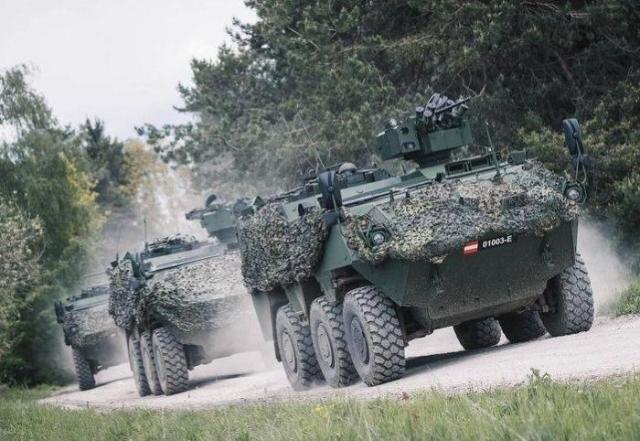
GDELS-Steyr Pandur EVO armored personnel carriers of the Austrian Army (c) Austrian Armed Forces
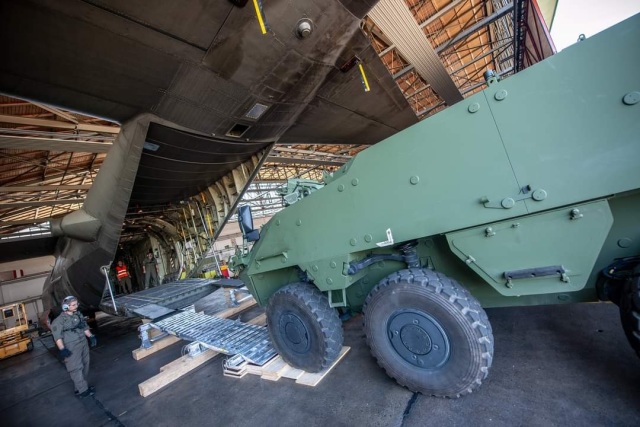
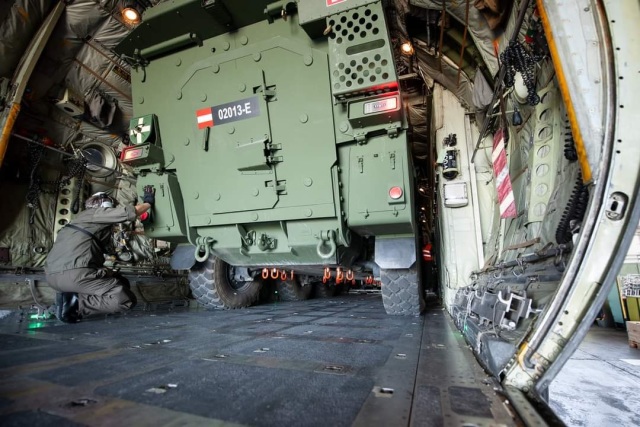
Tests of the GDELS-Steyr Pandur EVO armored personnel carrier of the Austrian Army for the possibility of transportation by a Lockheed C-130K Hercules military transport aircraft, June 2021 (c) the Austrian Armed Forces
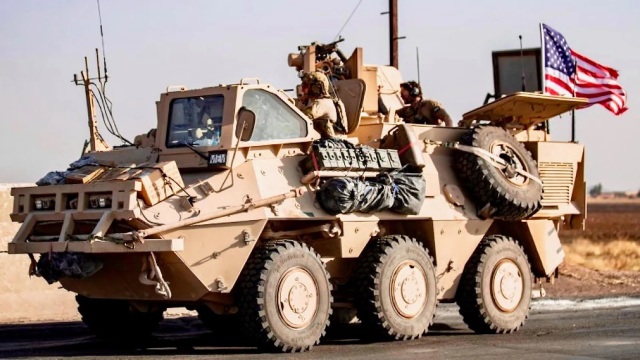
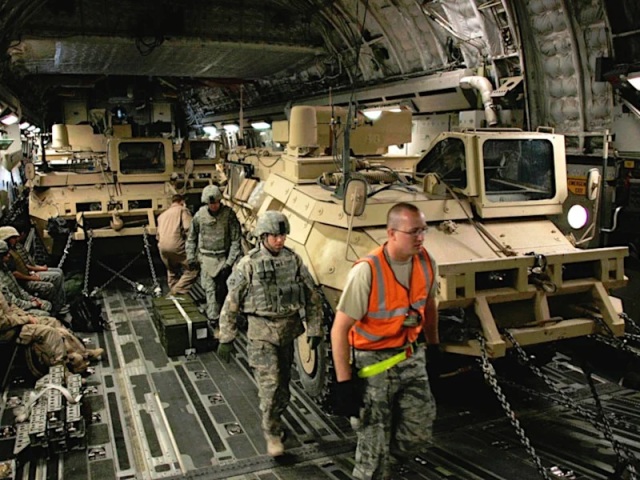
AGMS Armored Personnel Carriers (GDELS-Steyr Pandur I) of the US Special Operations Forces (c) US Department of Defense
